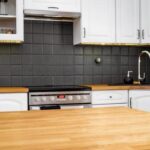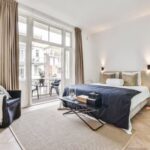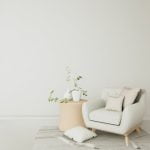Looking to add a touch of elegance and charm to your rental home? Wondering how to decorate a rental home with moulding? Moulding is a simple yet effective way to transform the look and feel of any space, including rented dwellings. From adding architectural interest to creating a cohesive design, moulding can elevate the overall aesthetic of a rental home while allowing renters to personalize their living environment without making permanent changes.
When it comes to moulding in home decor, there are various types and styles to choose from. Crown moulding, baseboard moulding, chair rail moulding, and picture rail moulding are just a few examples of the options available for adding decorative trim and accents to walls, ceilings, and other areas of a rental property. The versatility of different moldings allows renters to customize their space according to their personal style preferences and design goals.
Selecting the right type of moulding for a rental home is crucial in achieving the desired look and effect. It’s important for renters to consider factors such as the size of the room, the architectural style of the property, and any existing decor when choosing appropriate molding styles and sizes. Additionally, temporary installation options can be explored to ensure that there is no damage caused to walls or surfaces when adding moldings in a rental home.
Types of Moulding
Crown Moulding
Crown moulding is a popular choice for adding elegance and sophistication to a rental home. It is typically installed at the meeting point between the wall and ceiling, creating a seamless transition. For renters looking to incorporate crown moulding into their decor, there are lightweight and flexible options available that can be easily installed without causing damage to the walls or ceiling.
Baseboard Moulding
Baseboard moulding runs along the bottom of the wall where it meets the floor. This type of moulding not only provides a finished look to the room but also helps protect the walls from furniture and foot traffic. Renters can find baseboard moulding in various styles and sizes to match their rental home’s aesthetic, and temporary installation methods can be used to avoid permanent alterations.
Chair Rail Moulding
Chair rail moulding is often installed horizontally on walls at chair height, serving both functional and decorative purposes. This type of moulding can help protect walls from chair backs while also adding visual interest to the space. Renters can choose chair rail moulding in different designs, such as simple trim or more ornate styles, and explore non-permanent installation techniques for easy removal when moving out.
Picture Rail Moulding
For renters who want to showcase artwork or photographs without putting holes in their walls, picture rail moulding is an ideal choice. This type of moulding features a horizontal strip installed near the ceiling from which pictures can be hung using hooks and wires. With picture rail moulding, renters can personalize their space without causing any damage, making it a versatile option for decorating a rental home with artwork or photography.
Choosing the Right Moulding for Your Rental Home
When decorating a rental home with moulding, it’s essential to select the right styles and sizes that enhance the space without causing any permanent damage. Here are some tips on choosing the appropriate moulding for your rental home:
Consider the Rental Home’s Architectural Style
Before choosing moulding for your rental home, consider the architectural style of the property. For example, if you’re renting a Victorian-style home, ornate crown moulding and intricate chair rail moulding may be more suitable. On the other hand, a modern apartment may benefit from sleek and simple baseboard and picture rail moulding.
Size Matters
It’s important to select moulding sizes that are proportionate to the scale of the rental home. In smaller spaces, large and heavy mouldings may overpower the room, while in larger rooms, small and narrow trim could get lost. Be mindful of choosing sizes that complement the room’s dimensions to create a harmonious look.
Coordinate With Existing Elements
When choosing moulding for your rental home, take into account existing architectural elements such as doors, windows, and built-in features. Select moulding styles and sizes that coordinate with these elements to create a cohesive look throughout the space.
By following these tips, renters can effectively choose appropriate moldings that enhance their living space without making any permanent alterations. Ultimately giving them full creative freedom within their limitations while also respecting their lease agreement.
Installing Moulding in a Rental Home
When it comes to decorating a rental home with moulding, it’s important to keep in mind that any modifications made to the property should be reversible. This means that traditional methods of installing moulding, such as nailing or glueing, may not be viable options for renters. Fortunately, there are alternative methods and temporary installation options that allow renters to enjoy the aesthetic benefits of moulding without causing damage to the walls.
One popular temporary installation option for adding moulding in a rental home is the use of adhesive moulding strips. These strips are designed to mimic the look of traditional moulding but can be easily removed without leaving behind any residue or causing damage to the walls. Adhesive moulding strips are available in various styles and sizes, making it easy for renters to find an option that complements their home decor.
Another non-permanent option for installing moulding in a rental home is through the use of removable moulding decals. These decals can be applied directly to the walls and are designed to peel off easily without damaging the paint or wall surface. Removable moulding decals come in a variety of designs and patterns, allowing renters to add decorative accents throughout their home without making any permanent changes.
For those who prefer a more traditional look, there are also adjustable tension rods that can be used to hold lightweight moulding in place without the need for drilling or nailing. These tension rods can be placed between walls or in window frames, offering a simple and damage-free way to install temporary decorative trim.
As shown above on how easy it is these days people can add some character using molding on rental homes while keeping it cost-effective and reversible.
| Moulding Installation Options | Description |
|---|---|
| Adhesive Moulding Strips | Temporary solution mimicking traditional mouldings; easily removable without damage. |
| Removable Moulding Decals | Easily applied directly onto walls; designed to peel off without causing damage. |
| Adjustable Tension Rods | Support lightweight moldings with no need for drilling; placed between walls providing an easy-removal solution. |
Decorating With Moulding
Moulding can be a fantastic addition to a rental home, transforming the space and adding character. It’s a simple and cost-effective way to elevate the overall look of your home without making permanent changes. Here are some creative ideas and inspiration on how to incorporate moulding into the overall home decor.
1. Accent Walls:
One unique way to utilize moulding in your rental home is by creating an accent wall. You can use different types of moulding, such as picture rail or chair rail, to create stylish patterns or frames on the wall. This is a great way to add visual interest and depth to your space without the need for wallpaper or paint.
2. Frames:
Moulding can also be used to create decorative frames for artwork, mirrors, or even as a backdrop for shelves and other wall decor items. By utilizing crown moulding or baseboard moulding, you can easily create custom frames that add a sophisticated touch to your rental home.
3. Other Decorative Applications:
There are endless possibilities when it comes to using moulding for decorative purposes. You can add moulding around doorways, windows, and even along the ceiling to give your space an elegant and polished look. Additionally, consider using moulding to create built-in shelving units or wainscoting for a classic and timeless appearance.
When decorating with removable molding make sure you carefully inspect them periodically so that they remain firmly attached but do not damage your walls upon removal.
By following these tips on decorating with moulding in your rental home, you can easily enhance the overall aesthetic without sacrificing your deposit or risking damage to the property.
Painting and Finishing Moulding
When it comes to decorating a rental home with moulding, one of the key aspects to consider is the painting and finishing of the moulding. This not only helps to match the interior decor of the rental space but also ensures that the moulding can be easily removed when it’s time to move out. Here are some tips on how to paint and finish moulding effectively in a rental home:
- Choose the Right Paint: When selecting paint for the moulding, opt for a semi-gloss or high-gloss finish, as these are more durable and easier to clean compared to flat or eggshell finishes.
- Match with Interior Color Scheme: Consider matching the color of the moulding with the existing interior color scheme of your rental home. This will help create a cohesive look throughout the space.
- Use Removable Options: If you’re concerned about damaging the walls or want an easier option when it’s time to move out, consider using removable paint options for your moulding, such as peel-and-stick products designed for temporary home decor updates.
Additionally, it’s important to properly prepare and finish the moulding before painting in order to achieve professional-looking results. Before starting the painting process, make sure to sand down any rough areas and apply a primer to ensure that the paint adheres properly. Once painted, allow sufficient drying time before reinstalling or mounting onto walls.
Whether you’re adding accent moulding around door frames or installing picture rail moulding for hanging artwork, choosing appropriate finishing touches is essential for creating a polished look in your rental space without causing damage that could impact your security deposit once you move out. With these tips in mind, you can confidently enhance your rental home with beautifully finished and painted moldings that leave a lasting impression.
Moulding Maintenance
Moulding in a rental home can add a touch of elegance and personality to the space, but it also requires regular maintenance and cleaning to keep it looking fresh and new. Here are some useful tips on how to maintain and clean moulding in a rental home:
- Regular Dusting: Dust tends to accumulate on moulding, especially in high-traffic areas. Using a soft microfiber cloth or a duster, gently wipe down the moulding regularly to prevent dust buildup. This simple step can help keep the moulding looking clean and well-maintained.
- Deep Cleaning: For more thorough cleaning, especially if the moulding has accumulated dirt or grime, a mixture of mild dish soap and warm water can be used to gently wash the surface of the moulding. Be sure to dry it immediately with a clean cloth to prevent any water damage.
- Inspect for Damage: Regularly inspect the moulding for any signs of damage such as chips, cracks, or peeling paint. If any damage is found, address it promptly by either touching up the paint or repairing any visible flaws. This will help maintain the overall aesthetic appeal of the space.
- Protect During Cleaning: When cleaning the walls or floors near the moulding, take care to protect it from cleaning solutions or excessive moisture that could potentially damage or discolor the material. Use caution when using any harsh chemicals near the moulding, as they could cause permanent damage.
By following these maintenance and cleaning tips, renters can ensure that their decorative moulding remains in top condition throughout their time in a rental home without causing any long-term damage. With proper care, moulding can continue to enhance the aesthetic appeal of a rental space without needing frequent replacements.
Moulding Alternatives for Renters
In conclusion, decorating a rental home with moulding can truly elevate the aesthetic and atmosphere of the space. From crown moulding to baseboard moulding, there are various types to choose from, each with the potential to add character and charm to your temporary abode. Selecting the right styles and sizes, installing them without causing any damage, and creatively incorporating them into your decor can make a significant difference in how your rental home looks and feels.
For renters who are unable to install traditional moulding due to lease restrictions or other limitations, there are alternative options available. Removable moulding decals, adhesive moulding strips, and other non-permanent solutions provide renters with the opportunity to achieve the visual impact of moulding without making permanent changes to the property. These alternatives offer flexibility for those who want to personalize their living space while still adhering to rental agreements.
Whether you choose traditional or non-permanent options, maintaining and cleaning your moulding is essential for keeping it looking fresh and new. Additionally, when it comes time to move out of your rental home, knowing how to easily remove any paint or finishing from the moulding will help ensure a smooth transition. With these tips and techniques in mind, you can confidently explore how to decorate a rental home with moulding, transforming it into a stylish and personalized sanctuary.
Frequently Asked Questions
How Do You Attach Molding?
Attaching molding involves measuring and cutting the molding to fit the space, then using a nail gun or hammer and nails to secure it in place. Proper alignment and spacing is essential for a professional finish.
How Do You Put Moulding on a Wall?
Putting molding on a wall requires careful planning and measurement to ensure it fits properly. Start by marking the placement of the molding, then cut it to size and attach it using a nail gun or adhesive.
What Does Molding Do for a Room?
Molding can add visual interest and architectural detail to a room, creating a polished and finished look. It can also hide imperfections at the seams between walls, ceilings, and floors, giving the space a more cohesive appearance.
Additionally, molding can help define different areas within a room, such as separating the walls from the ceiling or floor. Overall, molding enhances the overall aesthetic of a room.

I’m thrilled to be your companion on this exciting journey through the world of home decor and design. With a passion for turning houses into homes and a keen eye for the finer details, I’m here to help you transform your living spaces into beautiful, functional, and meaningful havens.





